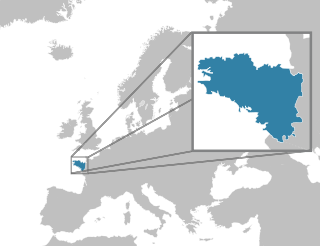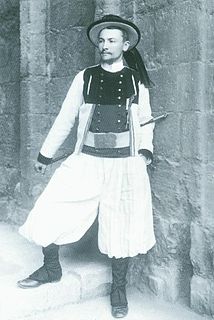Yann Fouéré was a Breton nationalist and a European federalist. His French birth certificate names him as Jean Adolphe Fouéré. He was born in Aignan, Gers, and died in Saint-Brieuc, Brittany.
Bernard Le Nail was a French writer and Breton militant. After studying commerce in Paris, he headed the promotional office of the Chamber of Commerce and Industry in Nantes. In 1979 he became Secretary General of the Comité d'Etude et de Liaison des Intérêts Bretons (CELIB) at Lanester. Between 1983 and 2000 he was director of the Cultural Institute of Brittany and had an important role in the conception and publication of the collection Les Bretons au-delà des mers : Explorateurs et grands voyageurs. He was also involved in the conception and publication of the following works: 500 Bretons à connaître, revising the Guide Bleu Bretagne, Guides Gallimard Bretagne, Les noms qui ont fait l’histoire de Bretagne, Dictionnaire des femmes en Bretagne, La Bretagne entre Armor et Argoat.

Before and during World War II, the Breton nationalist movements were generally associated with anti-French and the political right-wing. The extent to which this led to collaboration with the Nazi occupiers of France during the war, together with their motivations, is a matter of historical controversy.
Michael Jones is a British historian.
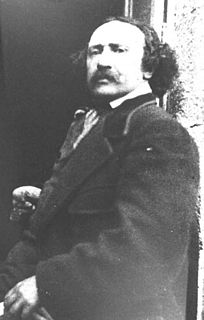
François-Marie Luzel, often known by his Breton name Fañch an Uhel, was a French folklorist and Breton-language poet.

The Battle of Saint-Aubin-du-Cormier took place on 28 July 1488, between the forces of King Charles VIII of France, and those of Francis II, Duke of Brittany, and his allies. The defeat of the latter signalled the end to the "guerre folle", a feudal conflict in which French aristocrats revolted against royal power during the regency of Anne de Beaujeu. It also effectively precipitated the end of the independence of Brittany from France.

Plouénan is both a commune in the Finistère department of Brittany in north-western France and also a town within the commune.
James Bouillé was a French architect based in Brittany.
Camille Le Mercier d'Erm was a French poet, historian and Breton nationalist. He later adopted the neo-Bardic name Kammermor. He is also known as Kamil Ar Merser 'Erm, the Breton language form of his name. His work as a poet and historian is marked by nationalist claims and calls to rebellion against the French state on the model of Irish nationalism.
Françoise Morvan is a French writer who specialises in Breton history and culture.
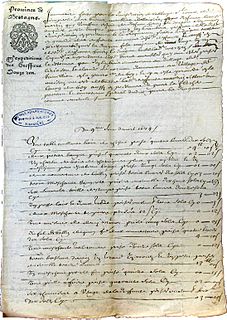
The Revolt of the papier timbré was an anti-fiscal revolt in the west of Ancien Régime France, during the reign of Louis XIV from April to September 1675. It was fiercest in Lower Brittany, where it took on an anti-lordly tone and became known as the revolt of the Bonnets rouges or revolt of the Torrebens. It was unleashed by an increase in taxes, including the papier timbré, needed to authenticate official documents.

François Eliès, born Fañch Eliès and better known by the pseudonym Abeozen, was a Breton nationalist, novelist and dramatist who wrote in the Breton language. Abeozen was also a noted scholar of the Welsh language.
Henri Bourde de La Rogerie was a French archivist and historian of Brittany.
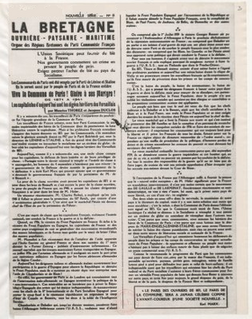
La Bretagne ouvrière, paysanne et maritime was a weekly newspaper published 1935-1950 in Brittany, France. It a regional organ of the French Communist Party in Brittany.
Kristian Hamon is a Breton and French historian whose work focuses on collaboration in Brittany during World War II.
Guerech of Brittany, was Count of Nantes and Duke of Brittany from 981 to 988.
Guihomar II de Léon was a Viscount of Léon. He is said to have succeeded his grandfather Guihomar I

Goulven or Golven was the Bishop of Saint-Pol-de-Léon in the seventh century.

